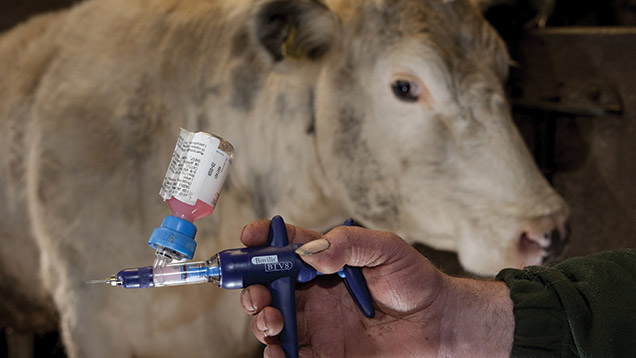Beware cattle imports from bluetongue-hit areas, says NI vet chief
 © John Eveson/FLPA/imageBROKER/REX Shutterstock
© John Eveson/FLPA/imageBROKER/REX Shutterstock Northern Ireland’s chief vet has called on Ulster farmers not to import cattle from countries hit by bluetongue.
In a statement, Robert Huey, chief veterinary officer at the Northern Irish Department of Agriculture and Rural Development (Dard), said the responsible sourcing of livestock is critical to maintain Northern Ireland’s “high animal health status” and its “ability to trade.”
As of 18 December, 135 cases of bluetongue virus serotype 8 (BTV-8) had been reported on farms in central France.
See also: French redraw bluetongue zones after reporting disease ‘jumps’
Speaking with Farmers Weekly, Mr Huey insisted no cattle have been imported from affected areas.
“None have arrived, this is just me being ultra-cautious,” said Mr Huey. “We’re just trying to keep as high a standard of animal health as possible.”
See also: Risk of French bluetongue spread raised in spring
Bluetongue facts
- Bluetongue is a notifiable disease – one livestock holders and vets are legally obliged to report – that mainly affects sheep and cows.
- Mainly transmitted by certain species of biting midges.
- It was eradicated from the UK following the first outbreak in 2007.
England is thought to be most at risk if midges, assumed to be the cause of the French outbreak, are blown across the Channel in the spring.
In Northern Ireland, the most likely path of infection is through imported animals, Mr Huey explained.
“At the moment, it is hard to say that anything in France doesn’t have the potential to be infected.”
“We can’t stop them legally or through legislation, so we’re just asking them not to do it. It’s about farmers taking responsibility for their animals,” said Mr Huey.
The French BTV-8 cases were the first reported in the EU since 2011 and France since 2010.
Clinical symptoms were first found in a single sheep on a farm in the Allier region of France on 21 August.
In response the French Ministry of Agriculture introduced a raft of disease control measures, including a restriction on animal movements in an exclusion zone around affected farms.
